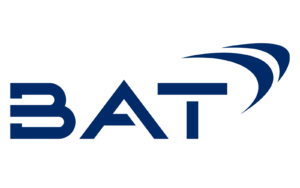What do you enjoy most about your job? How do you feel about your current workload? What skills would you like to develop? What aspects of your job would you like to change? These are just a few of the key questions asked during a stay interview—a structured conversation between a manager and an employee that aims to understand how the employee feels about their role and workplace.
Stay interviews are crucial because they help employers uncover what employees appreciate (and don’t appreciate) about their jobs, providing valuable insights that can guide actions to boost productivity or prevent unwanted turnover.
In today’s article, we’ll explain what stay interviews are, how they differ from exit interviews, how they can improve retention and engagement, and share best practices from our Top Employer BAT.
Keep reading not to miss out on expert tips and insights!
What are stay interviews?
Stay interviews are a proactive and structured approach to engage with current employees and gain insight into their job satisfaction, career aspirations, and overall experience within the company.
While it is traditional for organisations to have exit interviews, many companies realise there is a need to conduct stay interviews.
How do stay interviews differ from exit interviews?
Where exit interviews are reactive, stay interviews are a proactive approach to assessing the needs of employees while they are still within the organisation.

How to conduct a stay interview
Conducting a stay interview effectively requires preparation, a clear structure, and an open, honest dialogue.
The goal is to understand an employee’s motivations, satisfaction levels, and potential concerns, while also gathering actionable feedback for improving retention and engagement.
Here’s a step-by-step guide on how to conduct a stay interview:
1. Prepare and Set Expectations
- Plan Ahead: Schedule the interview in advance and make it clear that it’s meant to be an open conversation about their job satisfaction, career goals, and workplace environment—not an evaluation of their performance.
- Set the Tone: Let the employee know that the interview is a chance for them to share feedback, and that their insights will be used to improve the workplace. Emphasize that it’s a confidential and candid discussion.
2. Choose the Right Setting
- Pick a Comfortable, Private Space: Ensure the interview is held in a quiet, private setting where the employee feels safe to speak openly.
- Avoid Distractions: Give the employee your full attention. Turn off phones and minimize interruptions.
3. Start with Open, Positive Questions
Start with questions that encourage the employee to reflect on the positive aspects of their role and the company.
This builds rapport and helps them feel comfortable sharing.
Example questions:
- “What do you enjoy most about your job?”
- “What keeps you motivated and engaged at work?”
- “Why do you continue to stay with the company?”
- “How do you feel about the team you work with?”
4. Dive Deeper with Focused Questions
After discussing positive aspects, shift to questions that can uncover areas for improvement. Use open-ended questions to encourage detailed answers.
Example questions:
- “What challenges or frustrations do you face in your role?”
- “Are there any aspects of your job that you wish were different?”
- “Is there anything that could make your experience here better?”
- “Do you feel your contributions are recognized?”
5. Discuss Organizational Culture and Leadership
Inquire about the company’s culture and management style.
Understanding the employee’s perspective on leadership and organizational values can provide insight into how to improve the work environment.
Example questions:
- “How would you describe the company culture?”
- “What do you think about your relationship with your manager?”
- “Is there anything you would change about the company’s leadership?”
6. Address Any Concerns Immediately (If Possible)
If an employee shares an issue or concern that can be addressed right away, take action or offer to follow up promptly. This shows that you’re taking their feedback seriously and are committed to making improvements.
9. End on a Positive Note
Close the conversation by expressing appreciation for their time and feedback. Reassure them that their input will be used to improve their experience and the workplace overall.
Example closing statement:
- “Thank you for sharing your thoughts today. Your feedback is really valuable to us, and we’ll take it into consideration as we continue to improve. We’re glad to have you on the team!”
10. Follow-Up and Take Action
Close the Loop: Follow up with the employee to let them know how their feedback is being acted upon. This shows that you value their input and are committed to making positive changes.
Review the Feedback: After the interview, review the key insights and, along with other HR analytics, identify patterns or areas of concern that can be addressed.
Take Action: If an employee raised specific issues, work with HR or management to implement solutions. Be transparent about what changes or improvements will be made.
Stay interview Best Practice: insights from our Top Employer BAT:

In the APMEA West region (Middle East, North Africa, Caucasus, Central Asia and Pakistan), BAT recently established stay interviews with their employees to help with retention and focus on customised, individualised, and purposeful interventions for employees instead of a ‘one size fits all’ strategy.
The primary objectives of stay interviews include:
- Identifying factors that contribute to employee retention.
- Understanding individual motivations and needs.
- Addressing potential concerns or dissatisfaction before they lead to turnover.
- Aligning employees’ goals with the company’s objectives.
- Tailoring retention strategies to foster a more positive and fulfilling work environment.
This is just a snapshot of BAT’s innovative best practices; you can find the entire practice on our HR Best Practices database, which is exclusively available to Top Employers. Get inspiration and insight into the approach, challenges and learnings experienced by certified Top Employers. Access it now via the Top Employers Programme if you are certified or learn more about our HR best practice library.
Why the stay interview practice was needed
BAT sees stay interviews as necessary for their organisation’s talent management strategy. The interviews provide a proactive and insightful approach to employee retention, allowing the organisation to understand their existing workforce’s unique needs, motivations, and concerns.
By engaging in open and candid conversations with employees about their experiences, career aspirations, and overall job satisfaction, BAT can identify potential issues and opportunities for improvement before those issues escalate into reasons for departure.
Stay interviews not only demonstrate their commitment to employee wellbeing and growth but also enable the customisation of retention strategies and be used for your employer branding strategy.

BAT’s main focus was a targeted approach, mainly focusing on their key talents, employees sitting in critical roles, and women; this was in line with the turnover trends and likely personas to leave the organisation, as the organisation had observed in the last few years.
Their strategy and subsequent practice were born out of numerous brainstorming sessions in the HR team aimed at curbing attrition rates within BAT’s APMEA West region.
Over the past three years, this region has witnessed an upward trend in attrition, mirroring prevailing patterns across diverse industries and markets.
To effectively tackle this challenge, BAT developed and deployed a proactive measure to understand employee sentiments – what it would take to leave the organisation and what they appreciate in the organisation so that BAT could focus on elevating and building on those initiatives.
How stay interviews were implemented:
BAT conducted external research to see what cutting-edge practices were available externally in the era of “great attrition” to foster employee retention and engagement and found that stay interviews were highlighted by many other researchers and top-tier businesses globally.
They broke down the process into four steps.
Step 1: For BAT, building complete awareness of the stay interviews concept for their HR teams across the region was critical, including upskilling sessions to explain the practice and how to conduct meaningful and targeted stay interview sessions for different personas.
Step 2: The second step was a region-wide upskilling session for all their line managers run by the Area Talent Team to ensure the same messaging and level of understanding was provided for all line managers conducting the stay interviews with their direct reports.
Step 3: The third step was to share the standardised stay interview templates, questions with all line managers, and online self-learning tools for additional content.
Step 4: The fourth step was to gather all the stay interview information and to begin a complete analysis to ensure consistency of findings. This analysis was done by the to commence by the Area Talent Team.
Stay interviews results:
Stay interviews allowed BAT to take a deep dive into what drives employee corporate purpose and contributes to fostering the best workplace to develop and build their careers.
Overwhelmingly, the organisation saw that there were three main reasons employees chose to stay with BAT:
- Challenging work that allows them to grow both personally and professionally.
- A feeling of camaraderie and support, providing employees with a like-minded circle to work within.
- Learning opportunities provided by BAT to finesse functional mastery and leadership skills to deal with constant change and speed.

Stay interviews: a few more tips
- Be Transparent: Make sure the employee understands the purpose of the interview and how their feedback will be used.
- Be Consistent: Regularly conduct stay interviews, especially for key team members or high performers.
- Be Honest and Open: Show empathy and understanding. If the employee is sharing difficult feedback, validate their feelings and show appreciation for their honesty.
- Be Action-Oriented: Don’t let the feedback sit without action. Follow up and implement changes where possible.
- Respect Privacy: Keep the conversation confidential, and avoid discussing the details of the interview with others in the company unless necessary.
BAT’s stay interviews: a new way to listen to their employees.
Understanding employee experiences is critical to helping an organisation thrive and keeping valuable talent.
As mentioned earlier in the article, This is just a snapshot of BAT’s innovative best practices; you can find the entire practice on our HR Best Practices database, which is exclusively available to Top Employers.
If you want to read more about BAT’s practice and get a complete insight into the approach, challenges and learnings, you can access it now via the Top Employers Programme if you are certified.
Otherwise fill out the form to learn more about our HR best practice library.
